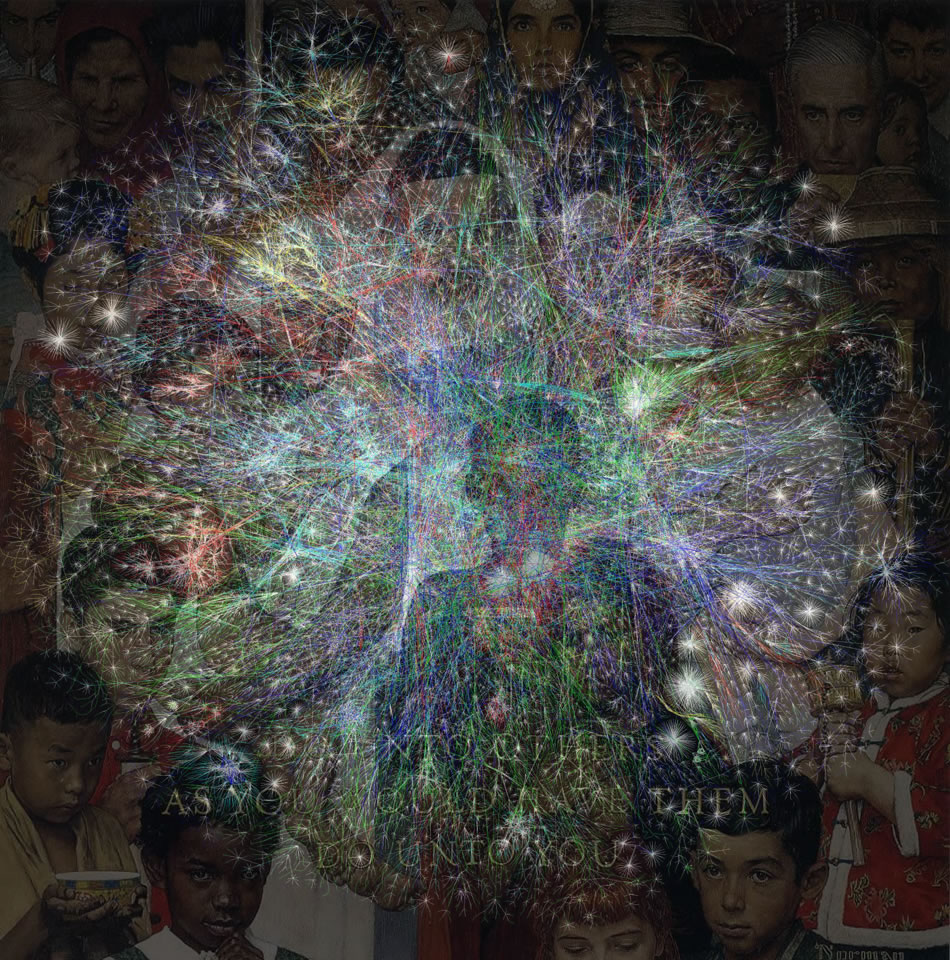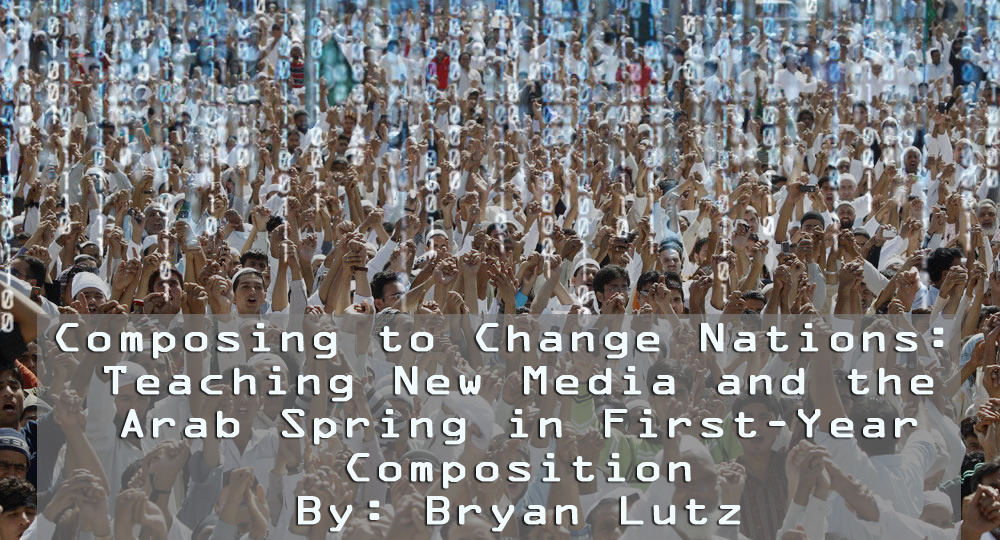Assignment
Conclusion: To Compose to Change Nations
The Arab Spring is a valuable heuristic for understanding the affordances of new media. Its capabilities seemed to help advocates capitalize on the mobilization potential within these countries. If multimodal composing is akin to writing, and writing is a social act, then all three were at play. These events were people on the ground working together to build networks in cyberspace, and those networks afforded them agency to make change.
 |
| Digital Mashup of Rockwell's "Golden Rule" and the Opte Project |
As Gina Maranto and Matt Barton state, “To abandon [social networking] is to forfeit potential insights concerning how technologies foster rhetorical awareness and mediate identity formation” (38). Thus this assignment embraces social networking for the expressed goal of civic engagement, thereby composing with the power of the Arab Spring. Blogs can allow students engage the public from the classroom; Blogs can raise the stakes for students by putting them in touch with an audience apart from the instructor and their peers; And blogs can facilitate an open dialogue amongst students, instructors, and outside audiences, a dialogue that is critical for allowing students to question how texts and media may be both influencing them, and allowing them to influence others (Dadas 429). These technological interfaces can be used in partnership with other social media as conduits, allowing students to question the ethical stakes of an issue by allowing students to construct what the issues mean to them, as well as to become part of a global network of citizens who are arguing for the world they wish to see. When combined with critical engagement and access to the affordances of technology, this pedagogy has potential to allow students to the opportunity to exonerate themselves from their positions as passive recipients of knowledge and as passive consumers of media and technology. And though we, as instructors of rhetoric and composition, must be cautious about how we may influence our students and why, this project, for the most part, encourages our students to engage the broader public on their own and as part of a global community. As Jason Del Gandio (2008) writes, “communication is the creation of reality; change the communication and you change the reality” (185). This project, I believe, affords students the opportunity to do that.
It is important that I acknowledge some of the limitations of this work. This article offers only a moment of stasis in what is an every evolving project. It is my hope that those instructors who attempt an assignment like this will be kind enough to share their experiences with me as I seek to improve it. It is far too soon to claim that the internet advocacy alone can create a free and just society, both Tunisia and Egypt still have a long way to go. I must admit that the advocacy happening in the classroom, though it certainly reaches toward people working for change on the ground, so to speak, it is still largely by remote. Though a number of students have been successful in reaching an outside audience, not every student is successful, and the responses we recieve vary widely. This disembodiment ground advoacy creates a different kind of digital divide, and one I seek to close. The field of composition is well established, but we often send first-year writing students forward in their education without knowing for sure how the skills they learn will serve them in the future. But just as the Arab Spring was the product of both digital and corporeal advocacy, this assignment challenges students to understand how social media can work for them, and there is potential that the scholarship they share with people may assist people who are actively working towards justice.
